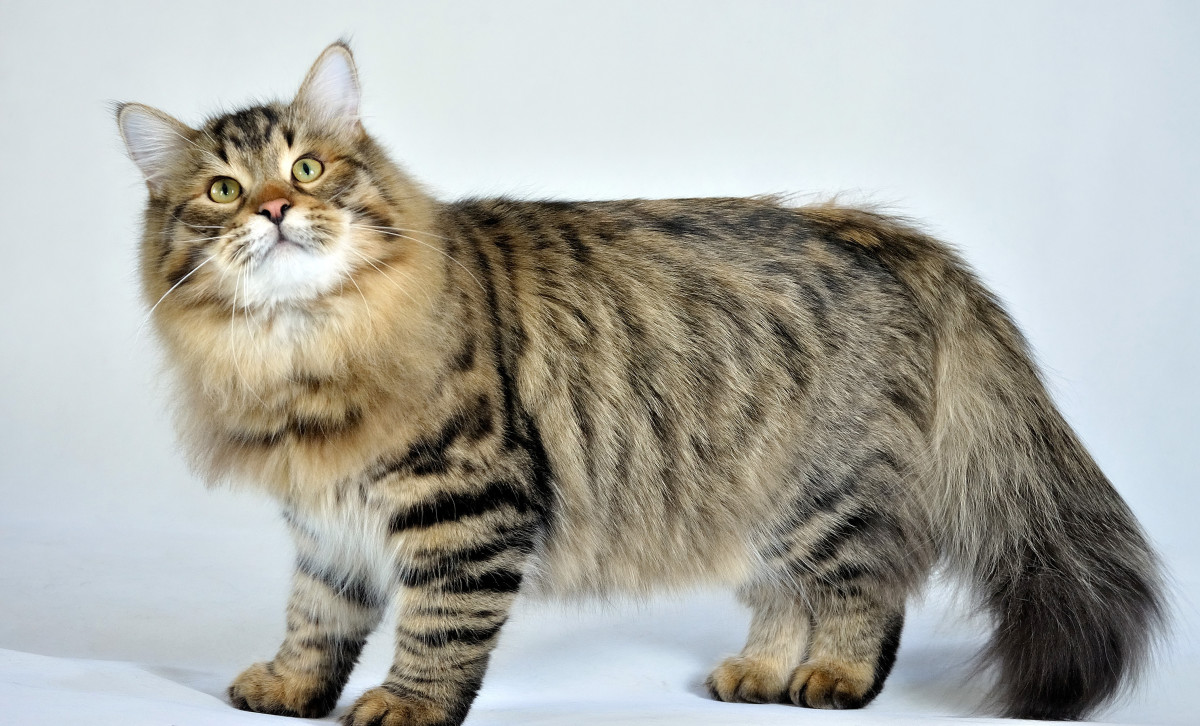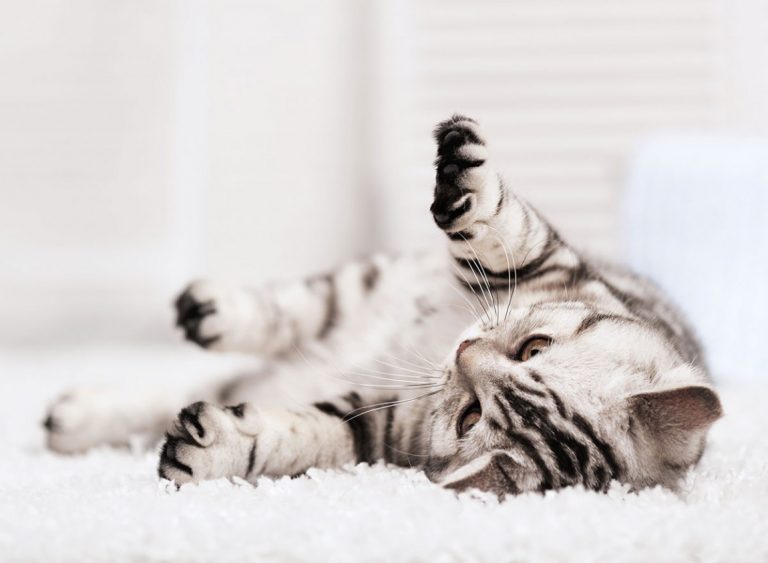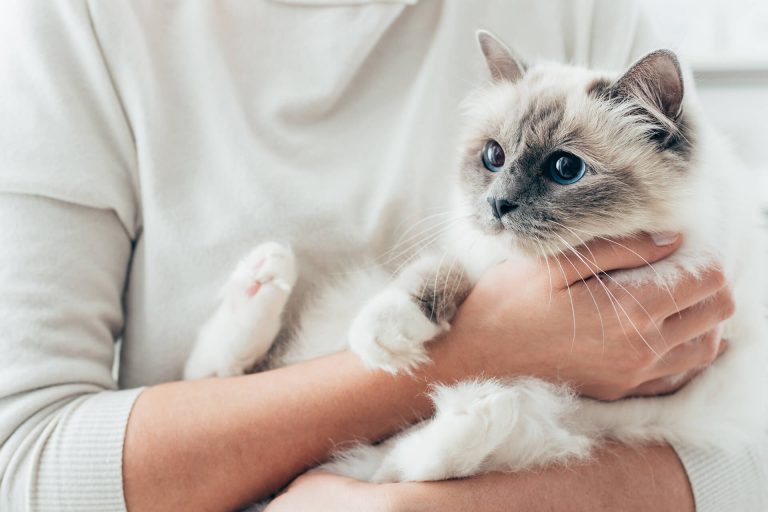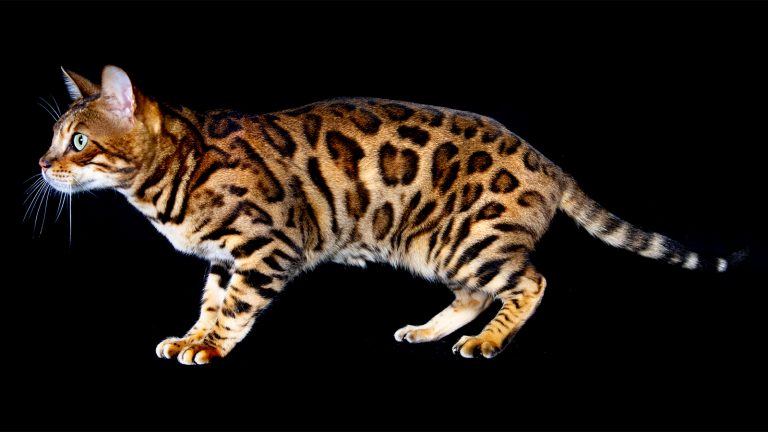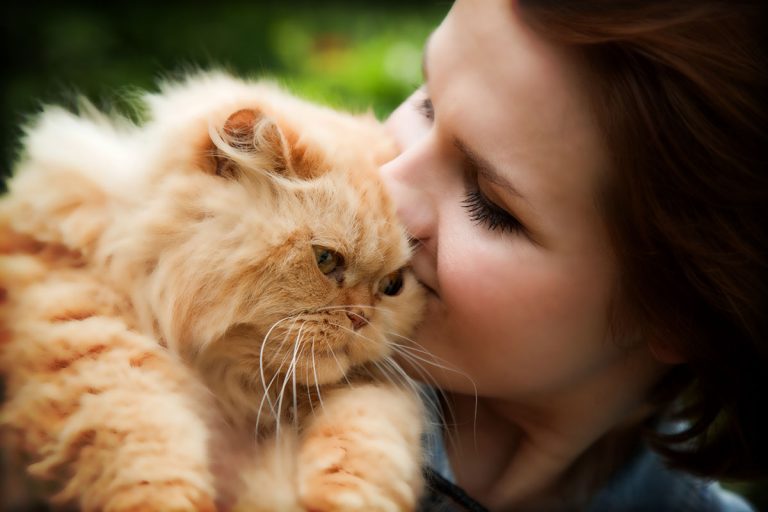Are Siberian Cats Hypoallergenic? | Siberian Cats Personality & Lifespan
Are Siberian Cats Hypoallergenic? | Siberian Cats Personality & Lifespan
Siberian Cats
Siberian Cats are one of the many breeds of cats that have been domesticated over the years. They originate from Siberia and Russia, where native people bred them to protect their villages against predators. This breed is known for its thick coat, which provides insulation against cold temperatures in winter months and protects them from other elements such as rain or snow.
Typically Siberian Cats can be a bit reserved when it comes to meeting new people, so patience should be used when trying to introduce them into your family home. However, once they feel at ease with who you are, then they will show their playful side and try their best not to step on any toes!
History of Siberian Cats
The breed’s origin is unknown, but it’s believed that nomadic tribes who came down from Mongolia might have brought these animals with them. The breed probably evolved in Russia and Siberia. The Siberian cat’s fur was treasured by the nomadic people who used it to stuff pillows, carpets, and clothing. Their high-pitched meow is thought to be a call for help.
When domesticated, the breed frequently appeared in cat shows and was one of the most popular breeds in Europe during the 17th through 19th centuries.
The first Siberian cats were brought to America by settlers from upstate New York in 1909. The breed’s popularity in the United States has waned since the 1960s, but it has remained popular in countries where the cold climate is similar to Siberia.
The Siberian cat is one of the most popular cat breeds in Russia. It is thought that the breed originated in Siberia somewhere between China and Korea about 1000 years ago. The first recorded Siberian was owned by a Russian nobleman in 1871, but there were no further records of the breed until 1927, when a breeder named D.I. Myshin bred a white Siberian cat that was referred to as a Czarist and was smaller than his breed.
In the 1970s, American breeders of Siberians began to interest in the breed and started rescuing the cats from Siberian fur farms. Siberian cats became very popular in Germany but were never allowed to be registered by the KFSS for purposes of breeding. Siberians were not widely shown until 1975. Today there are four recognized strains of Siberians: the Russian, Siberian, American, and Turkish.
Siberian Cats as Pets
These powerful creatures can live from 10 to 18 years. The Siberian’s thick coat protects it from the cold weather, but it also limits its ability to warm itself in warm weather. These cats need adequate food, shelter, and a safe area to play. They are highly intelligent but can be stubborn.
Siberians are known for their love of the outdoors. They enjoy chasing animals, playing with children, and running up and down the fence line of your property. The breed is often used as a livestock guard animal because it protects herds from predators.
Natural hunters, these cats instinctively stalk prey and pounce on them in a short burst of speed. They are not known to bring their prey back to the owner.
Siberians love water and will carry their kittens into the shower if they get the chance. You can usually teach them to use a litter box after they’re 6 weeks old, but they may refuse to use it in their kitten years.
The eyes of Siberian cats can be green, blue, gold, or yellow. They have ears that flop down and short tails. The coat comes in many colors and combinations, including tabby, red, silver, brown, black, and white. The coat may have spots or swirls of color on it.
Siberians are very intelligent and enjoy learning new tricks. They can learn to stand up on their back legs like a dog and beg for food. They even enjoy fetching balls and other toys.
These animals are loyal companions who need attention from their owner or a family member 24 hours a day – they don’t get along well with strangers.
These cats are very vocal and are known to meow or talk most of the day. You’ll hear them purr loudly when they’re happy, and they may let out a short scream when they want to be noticed. Some Siberians will even sing or hum to themselves.
Siberian cats need plenty of space if you plan on keeping them indoors because they like to exercise regularly and tear up furniture when given the opportunity. They can be destructive when they finish their daily exercise.
Siberian Cat Breeding
The longhair version of the breed can be found in silver or white coats and is preferred by breeders. The long-haired coats are not prone to matting and require minimal maintenance.
As a puppy, Siberian kittens should have a round face with large eyes that have whisker pads. The two dark areas below the eyes are called the “Mongolian spots,” even when they occur on other coat colors. The ears are upright and should be proportional to the head and be thick at the base.
The tail is thick at the base and tapers off towards the end, which has fur lining it. The Siberian cat’s legs should have a medium length with a rounded paw.
The Siberian cat has a coat that is between long and short. This breed has a dense double coat that is easy to groom (especially with the longhaired version) because it typically sheds at a moderate to low rate. The single-coated alternative, called the Neva Masquerade, tends to be lighter in weight, more active, and easier to care for in grooming than its long-haired cousins.
The Siberian has a well-defined head with a soft, rounded shape and chiseled cheekbones that are well-defined and clearly visible. The muzzle is generally in proportion to the rest of the face, and the chin should be slightly sunken in. The ears have a wide base with hairs that taper up towards the tip – they are triangular in shape with black fur on top and down. The tail is thick at the base, tapers off towards the end, and has fur lining it.
The Siberian cat’s legs are medium length with a rounded paw. The hind legs should be much longer than the front legs, and the paws should have fur on them. The toes on the cat’s front paws should be slightly spread when they walk, and the claws are dark-colored and semi-retractable – this helps them dig into the ground surface when they take steps.
The eyes of a Siberian cat should be large, almond-shaped, wide-set, and have an expressive look to them that can’t be mistaken for anything else. There should be no white spots anywhere on the blue, chocolate, or cream-colored Siberian cats.
The Siberian cat’s coat is longer and denser than that of many other breeds – it can be curly, straight, or wavy with a soft texture to it. Longer hairs are found on the feet and tail, and shorter hairs on the ears and legs. Coat coloration can range from white, silver, black, blue, or brown with tabby markings or spots. The fur on the back has a softer feel to it than the coat on the face and ears.
The Siberian cat’s coat needs minimal grooming to take care of it compared to other cat breeds. Longhaired cats need only occasional brushing, and short-haired versions require brushing one or two times per week. In either case, you can expect plenty of shedding by these animals, so keep up with hair that gets caught on furniture, clothing, blankets, and carpets too.
Siberian cats are known for their independent and friendly dispositions. They love the interaction with people and other pets in the household. Siberians have a love of playing, which they do with toys, balls, and occasionally each other, but they can also enjoy being left alone at times too. These cats are very playful and will enjoy being active all day long, and need plenty of room to move around.
The owner has to be careful about bringing the pet into the home because it can sometimes take a while for these cats to adjust to change in the environment and become comfortable with their new surroundings.
The Siberian cat does not need to be groomed every day but will need to be brushed once or twice a week. The longhaired version of the breed is more prone to matting and sheds a lot. Owners of these cats should make sure they are properly cleaned up so that there is no hair on their fur and they don’t get fleas or any other unwanted insects from crawling on them.
Siberian cats need to be fed several times a day. They will eat about ten different kibbles per day, along with fresh fruits and vegetables. These cats tend to be more active than others, so the owner needs to give them plenty of time outside for playing and exercising. If you don’t have a yard or let them out, you will need to get them a toy with which they can play in an indoor setting.
Are Siberian Cats Hypoallergenic
Many people think that Siberian cats are hypoallergenic. There is some truth to this, as the breed does produce less of an allergen than other breeds such as the Persian or Maine Coon cat.
Siberian cats are a breed of cat that is often touted as being hypoallergenic. This does not mean they don’t shed, but it means that their fur is less likely to bother people who have allergies.
The Siberian cat was bred in Russia and Finland from wild cats in the region called “forest cats.” The result is a medium-sized feline with an intelligent expression on its face and soft, thick fur, which comes in many colors, including white, cream, black, and silver tabby.
While the Siberian cat can be less irritating for allergy sufferers than other breeds of cats because it sheds less hair overall (and has shorter hairs), there are still individuals who react to them.
However, it’s important to note that there will always be an allergen present in any cat – and a small reaction may occur with Siberians just like it would with any other breed.
Appearance of Siberian Cats
Siberian cats look like wild versions of domestic cats. Their thick, dense fur is long and shaggy. The coat comes in every color of the rainbow and combinations of colors. They are small, powerful animals with big paws and a deep chest, and they have a sleek body that enables them to pursue prey into harsh weather conditions.
Siberian cats are strong-willed, often dominant creatures who do best as an only cat or with another stubborn companion. Many cat experts recommend that they not be kept in homes with children, although there are a few reports of Siberians living with kids. These cats need lots of attention and space. They tend to be territorial and vocal when they want something.
Siberian Cats Personality
The Siberian cat is known for its friendly and affectionate personality. The Russian Blue breed is desirable for being a good companion and showing a total lack of fear around people. It is one of the most popular breeds in the United States, along with the American shorthair.
Siberian cats are also known for their cheeky, playful personalities. Their behavior can vary from completely independent to clingy and needy. This is because they have a high degree of intelligence and are very curious by nature. They will usually choose to indulge their people with long periods of attention.
Siberian cats are very dog-like in their behavior and personalities. They are extremely social and enjoy other pets in the environment, especially dogs. Siberians can play fetch like dogs, as they are very adept at catching balls or even playing with specific toys that they have been taught to retrieve.
They also enjoy human contact but have a tendency to follow the owner in and out of rooms as a dog would. Siberians are excellent at jumping and climbing but will usually use the door to exit a room rather than jumping down from a high shelf or table.
Siberian Cats Maintenance: Are Siberian Cats High Maintenance?
Siberian Cats are a rare breed of cat that originated from Russia. Originating in the cold Siberian regions, these cats have adapted to the freezing temperatures and developed thicker coats than other cats’ breeds. This makes them high maintenance when it comes to grooming and care.
Siberian cats require a lot of attention from their owner or another family member. They are known for being stubborn and dominant, which is something you should consider before getting one.
They can also be prone to fighting with other animals in the household, so if you do not take care of them properly, this may happen. If you want to keep your cat healthy, you must regularly get the appropriate veterinary care to keep them strong and healthy.
They can also be territorial about their personal space, so if there are other pets in the home, they may attack them. That’s why you must keep these cats isolated from other pets in a large cage or yard.
Siberian Cats’ Colors
Siberian cats are known for their long fur and larger ears than most other cat breeds. The Siberian cat’s appearance is also different from most domesticated cats; it has a thicker coat of fur that has a smooth texture to it, and its facial features have a look of wildness about them.
The Siberian breed has a wide range of colors. The most common are shades of white, silver, black and blue. Less common colors include gray, cream, mink/chocolate, and tabby markings. Blue eyes are typical of this breed.
There are two types of coats: long hair and longhaired coats. Long-hair cats have longer fur covering them in an even layer instead of short-hair cats, which have shorter fur, which is only on the feet and tail and not on the ears or legs.
Siberian Cat Size: How Big Is a Siberian Cat?
Adult Siberians can reach between 12 and 20 pounds, depending on the sex, and should be about 13-15 inches high at the shoulder. Males tend to be larger than females; males weigh between 12 – 15 pounds while females weigh between 8 – 11 pounds.
Some Siberian cats, especially males, are born without one or more toes. Some breeders will castrate these cats to prevent the births of more kittens than the home can handle.
Siberian Cat Weight
Siberian Cat Weight is an important topic for many cat owners, as Siberian weight can be a key indicator of health. The average weight for a male Siberian ranges from 12-20pounds, and females can range anywhere from 10-15 pounds.
For those who are interested in their cat’s weight, it should be noted that most cats will gain between 1 to 4 pounds during the winter months when they’re not moving around as much.
Siberian Cat Temperament
Siberian cats have distinctive blue eyes and pointy ears. Siberian Cats’ temperament is typically very docile, but some can be more aggressive than others.
Siberian cats are known for their bright blue eyes and thick coats. They have a reputation for being gentle, calm, and quiet animals that enjoy close contact with humans. Siberian Cats also possess the ability to adapt well to new environments or changes in routine.
Do Siberian Cats Like to Cuddle?
Siberian cats like to cuddle! You can’t get cuddlier than a Siberian cat. They’re big, fluffy, and have an endless capacity for love. When you’re feeling down, you need a Siberian cat to get you feeling right again. The cats are happy to let you cuddle them for hours. They’ll even sleep on your head when you’re about to go to sleep.
What Should I Feed My Siberian Cat?
It is important to feed your Siberian cat a high-quality, balanced diet to promote your cat’s health and prevent nutritional deficiencies. A good diet for a Siberian cat includes wholesome and natural foods. These foods can include meats such as beef and poultry and are supplemented with vegetables, fresh fruit, and healthy oils.
This diet is also supplemented with vitamins and minerals for a well-balanced diet. One reason for this diet is that cats thrive on natural foods. Another reason is that this diet can help provide a healthy weight for your pet as these diets typically are lower in carbohydrates.
Siberian Cats’ Cost: Are Siberian Cats Expensive?
The Siberian Cat is a breed of cat that originated in Russia. They have thick coats to keep them warm, and they typically weigh between 10-18 pounds. While the average cost for a Siberian is $1,000-$2,500, prices can range anywhere from $700-$4,000 depending on color and generation.
Siberian Cats Lifespan: How Long Can Siberian Cats Live?
Siberian Cats are among the most beautiful and admired cat breeds in the world. They have a long, thick coat that is designed to repel water, snow, and ice. Their fur is also extremely dense, which keeps them warm during their cold winters. Siberian Cats can live up to 18 years old with proper care and nutrition! Thus, the Siberian cat’s lifespan can vary, but 15 years or more is not uncommon.
How to Care for A Siberian Cat?
The Siberian cat is easy to care for as it does not require a lot of attention. Feeding is the only time when the owner might have to pay attention.
The Siberian cat will eat about ten or so kibble dishes per day and some fresh fruits and vegetables. It will sleep normally, and like all cats, it likes to play and exercise.
Are Siberian Cats Affectionate & Friendly
Siberians are generally friendly and will make a good addition to the family. They require time to adjust to their new environment, though, so owners should be prepared for a period of time in which they won’t quite be as friendly with other pets in the home. After that, they become very social with other animals in the household and will get along well with them.
Are Siberian Cat Very Vocal?
Siberian cats are very vocal and will let you know when they want something. They meow loudly to greet their owners and get your attention at mealtime. They will even let you know when they are not happy with something. They will meow to let you know when they need to go out or meet their needs.
Can the Siberian Cat be left Alone?
The Siberian cat is so social that it can be considered a member of the family. It wants company and will welcome people and other cats into its home. The Siberian cat does not like to be alone for very long; it becomes bored and active when left alone for too long. Siberians want someone else in their life who loves them and whom they can enjoy the company of all day long.
Are Siberian Cats Good for Kids
Siberian cats are not recommended for families with small children, as they may play rough with them, and the children may be unable to collect the cat in time when they are injured.
The owner should always keep children supervised when they are playing with the cat, and if you have an infant, you should be extra careful about this to avoid them being scratched or bitten by the animal.
Does the Siberian Cat Shed?
When it comes to shedding, the Siberian cat is actually not one of the worst types. Its coat may shed more than that of some other breeds, but this does not come with many health problems, and there should be no major problems from it as long as you keep up with brushing it regularly.
Siberian Cat Health Issues
Siberian cats are a truly unique breed. They come from the coldest place on earth, Siberia, and are popular for the thick coats that keep them warm in even the northern climates’ harshest. But these long-haired beauties have a few health issues to be aware of if you’re considering adopting one.
Siberian Cats have many different health issues that can be prevented with proper care and attention. The Siberian Cat has the following health problems: luxating patella, kidney disease, hypertrophic cardiomyopathy (HCM), hyperthyroidism, polycystic kidney disease (PKD), and progressive retinal atrophy (PRA).
Nearly all of these conditions can be avoided by providing your cat with routine vet visits and vaccinations as well as a healthy diet.
Are Siberian Cats Good with Dogs
Some pet owners are looking for a breed of cat that is good with other pets in their home. The Siberian Cat may be the perfect solution to this dilemma.
Siberian cats are known as being extremely docile and friendly, which makes them an ideal candidate for families with both dogs and cats. Besides, Siberians love playing outdoors, making them an excellent choice if you want a cat that can explore your yard or enjoy time outside on nice days.
